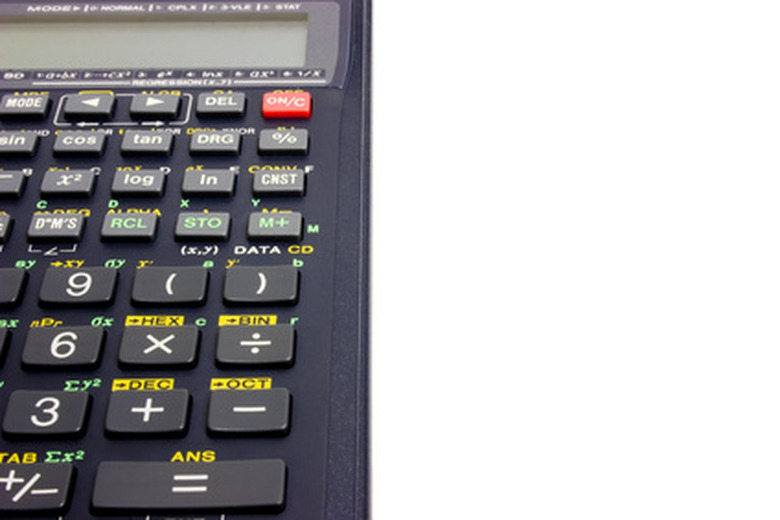How To Change Fractions Into Decimal Equivalents
Fractions are used to represent numbers that are not whole numbers and consist of two parts; the numerator and the denominator. The denominator is the number on the bottom of the fraction and represents the complete group or units. The numerator is the number at the top of the fraction, and represents part of the total group. For example, if a group consists of four people with one boy and three girls, the number of boys in the group is expressed as the fraction 1/4. Fractions are converted to their decimal equivalent by dividing the numerator by the denominator.
Step 1
Enter the fraction's numerator in to the calculator. For example, to convert the fraction 4/10 into its decimal equivalent, first enter 4 in to the calculator.
Step 2
Press the calculator's "divide" button and then enter the fraction's denominator. For the fraction 4/10, you would enter 10 in to the calculator.
Step 3
Press the calculator's "equals" button to perform the calculation, and the answer will be displayed as its decimal equivalent. For the fraction 4/10, the decimal equivalent will be 0.4.
Step 4
Try a more complex example, for example 82/168. This would be entered as 82 divided by 168, giving the result 0.488.
TL;DR (Too Long; Didn't Read)
Ignore any whole numbers that may accompany the fraction when dividing the numerator by the denominator. The decimal equivalent once calculated is then added to the whole number. For example, the fraction 2 and 4/10 would become 2 + 0.4 which equals 2.4.
Cite This Article
MLA
Downes-Powell, Gareth. "How To Change Fractions Into Decimal Equivalents" sciencing.com, https://www.sciencing.com/change-fractions-decimal-equivalents-7712856/. 24 April 2017.
APA
Downes-Powell, Gareth. (2017, April 24). How To Change Fractions Into Decimal Equivalents. sciencing.com. Retrieved from https://www.sciencing.com/change-fractions-decimal-equivalents-7712856/
Chicago
Downes-Powell, Gareth. How To Change Fractions Into Decimal Equivalents last modified March 24, 2022. https://www.sciencing.com/change-fractions-decimal-equivalents-7712856/
